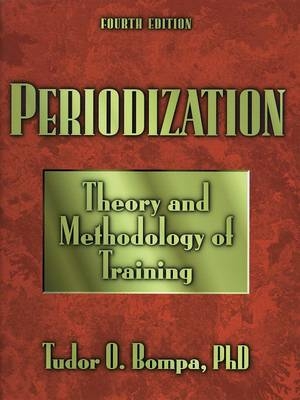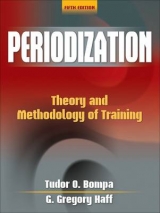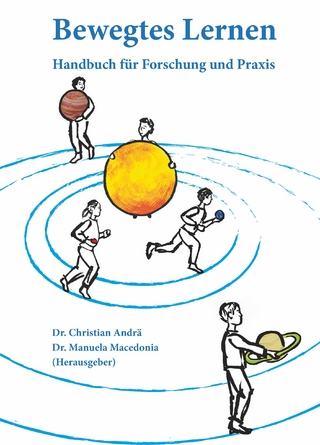
Periodization
Human Kinetics Publishers (Verlag)
978-0-88011-851-4 (ISBN)
- Titel erscheint in neuer Auflage
- Artikel merken
Periodization is a method for structuring short and long term training plans, grounded in research in exercise physiology, athletic psychology and training methodology. It varies the intensity and volume of training to optimize the body's ability to recover and rebuild. This results in better performance and less risk of injury. This text describes the underlying principles of effective training; the objectives and components of an effective, long term training programme; proven strategies for optimal peaking; and how to train for better motor ability, working capacity, skill effectiveness and psychological adaptability.
" Tudor O. Bompa, PhD, is recognized worldwide as the foremost expert on periodization training. He first developed the concept of ""periodization of strength"" in Romania in 1963, as he helped the Eastern Bloc countries rise to dominance in the athletic world. Since then, Bompa has used his system to train 11 Olympic Games and world championship medallists and elite athletes. A full professor at York University in Toronto, Bompa has authored several important books on physical conditioning, including Serious Strength Training, Second Edition, Periodization Training for Sports, and Total Training for Young Champions as well as numerous articles on the subject. He has made presentations on periodization training in more than 30 countries. His publications, conferences, and ideas are highly regarded and enthusiastically sought out by many top professional athletes and training specialists. Bompa is married and lives in Sharon, Ontario. Bompa currently offers certification programs in strength training, planning, and periodization. ""The Tudor Bompa Training System"" is designed for personal trainers, instructors, coaches, athletes, and educators. For more information, contact Dr. Tudor Bompa, P.O. Box 95, Sharon, ON, LOG 1VO, Canada. "
Part I: Training TheoryChapter 1. The Basis for Training-Scope of Training -Objectives of Training -Classification of Skills -Classification of Sports -System of Training -Training Adaptation -Supercompensation Cycle -Detraining -Sources of Energy -Summary of Major ConceptsChapter 2. Principles of Training-Active Participation-Multilateral Development -Specialization -Individualization -Variety -Modeling -Load Progression -Summary of Major ConceptsChapter 3. Preparation for Training-Physical Training -Technical Training -Tactical Training -Theoretical Training -Summary of Major Concepts Chapter 4. Variables of Training-Volume -Intensity -Density -Complexity -Summary of Major ConceptsChapter 5. Rest and Recovery (With Yusuf Omar)-Recovery Theory -Natural Means of Recovery -Physiotherapeutic Means of Recovery -Psychological Means of Recovery -Sport-Specific Recovery -Recovery From Exercise -Recovery for Training and Competition -Permanent Means of Recovery -Fatigue and Overtraining -Monitoring, Treating, and Preventing Overtraining -Summary of Major ConceptsPart II: Periodization TrainingChapter 6. Workout Planning-Importance of Planning -Planning Requirements -Types of Training Plans -Training Lesson -Daily Cycle of Athletic Training -Summary of Major ConceptsChapter 7. Training Cycles-Microcycle-Macrocycle -Summary of Major ConceptsChapter 8. Annual Training Program-Periodization -Psychological Supercompensation -Periodization of Biomotor Abilities -Periodization of Strength Training -Periodization of Endurance -Periodization of Speed -Integrated Periodization -Annual Plan Training Phases and Characteristics -Chart of the Annual Plan -Criteria for Compiling an Annual Plan -Summary of Major ConceptsChapter 9. Long-Term Planning and Talent Identification-Stages of Athletic Development -Generalized Training -Specialized Training -Olympic Cycle or Quadrennial Plan -Performance Prediction for an Olympic Cycle Plan -Talent Identification -Summary of Major ConceptsChapter 10. Peaking for Competitions-Training Conditions for Peaking -Factors Facilitating Peaking -Athletic Competition -Summary of Major ConceptsPart III: Training MethodsChapter 11. Strength and Power Development-Biomotor Abilities -Strength Training -Types of Muscle Contraction -Factors Affecting Strength Performance -Matching Strength Training to Performance -Methodology of Strength Training -Methodical Parameters Relevant to Strength Training -Succession of Strength-Training Exercises in a Training Lesson -Methodical Sequence of Developing a Strength-Training Program -Methods of Strength Training -Maximum Strength Methods -Developing Muscular Endurance -Specificity Versus a Methodical Approach -Summary of Major ConceptsChapter 12. Endurance Training-Classification of Endurance -Factors Affecting Endurance -Methodology of Developing Endurance -Training Parameters for Aerobic Endurance -Training Parameters for Anaerobic Endurance -Endurance-Training Programs Based on the Lactic Acid Method -Methods to Develop Endurance -Specific Racing Endurance -Training the Energy Systems-Five Intensity Values -Training the Energy Systems for Aerobic-Dominant Sports -Training the Energy Systems for Junior Athletes -Summary of Major ConceptsChapter 13. Speed, Flexibility, and Coordination Training-Speed Training -Flexibility Training -Coordination Training -Summary of Major ConceptsAppendix: Blank Charts for Annual and Four-Year PlansGlossaryReferencesIndexAbout the Author
| Zusatzinfo | 152 black & white illustrations, 41 black & white halftones |
|---|---|
| Verlagsort | Champaign |
| Sprache | englisch |
| Maße | 216 x 279 mm |
| Gewicht | 1179 g |
| Themenwelt | Sachbuch/Ratgeber ► Sport |
| ISBN-10 | 0-88011-851-2 / 0880118512 |
| ISBN-13 | 978-0-88011-851-4 / 9780880118514 |
| Zustand | Neuware |
| Haben Sie eine Frage zum Produkt? |
aus dem Bereich



